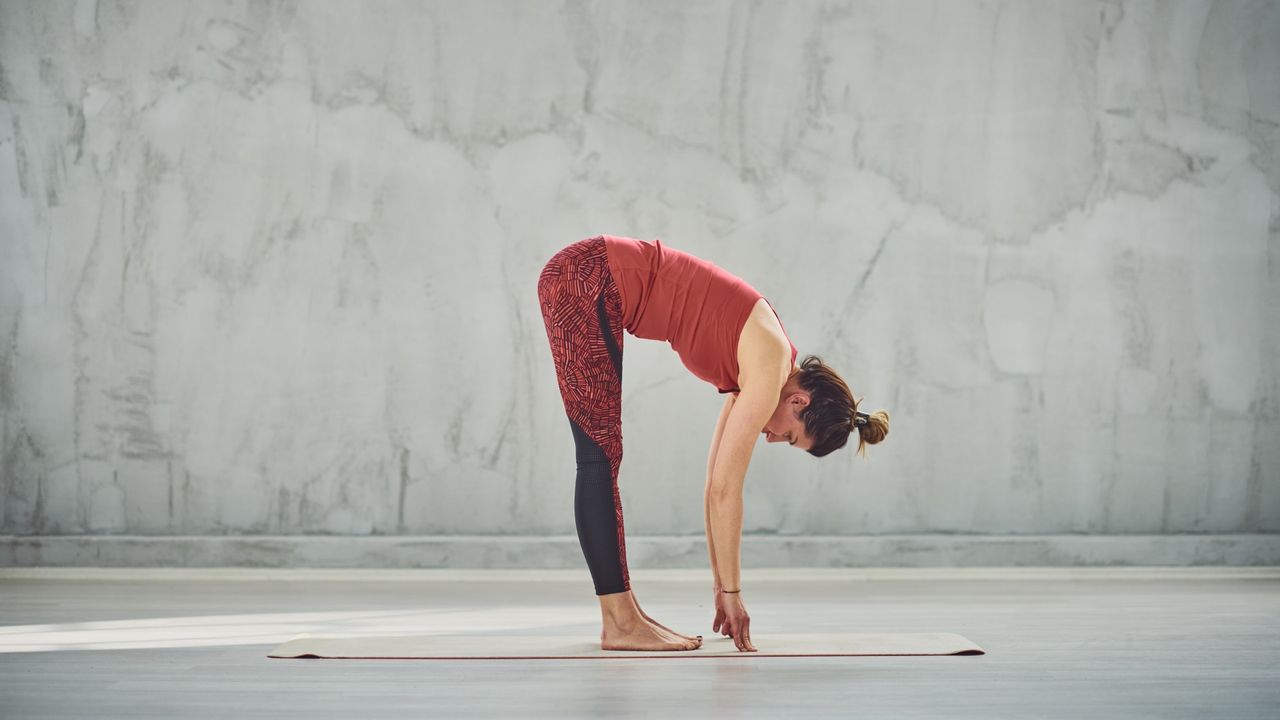The Pilates roll-down, a foundational exercise in the Pilates method, is being praised for its effectiveness in enhancing spinal mobility and overall well-being. According to Abby McLachlan, founder of the Pilates and yoga studio East of Eden, this simple two-minute exercise serves as a powerful reset for the spine, improving posture and relieving tension.
The roll-down involves a gentle articulation of the spine, allowing for a full stretch and engagement of the core muscles. McLachlan emphasizes its benefits, stating that it can help individuals feel more focused and calm, whether performed at the beginning or end of a Pilates class.
How to Perform the Pilates Roll-Down
Executing the roll-down is straightforward, but attention to form is essential for maximizing its benefits. To begin, stand with your feet hip-distance apart. Start the movement by tucking your chin and articulating your spine forward, allowing your arms to hang loosely by your sides. Gradually lower your fingertips toward the ground, bending your knees as necessary until you reach a full forward fold.
McLachlan notes, “It’s actually part of an exercise in Joseph Pilates‘ original 34, often coupled with a push-up once you get to the floor.” In contemporary practice, the roll-down is frequently utilized as a warm-up or cooldown exercise, highlighting its role as a restorative movement.
Benefits of the Pilates Roll-Down
The benefits of the Pilates roll-down extend beyond mere spinal flexibility. McLachlan describes it as an effective exercise for spinal flexion and mobility, engaging the abdominal muscles to control the movement. This engagement can alleviate back and neck tension, while also contributing to improved posture and alignment.
As McLachlan explains, performing a roll-down can reveal a lot about an individual’s movement patterns, making it a valuable tool for both instructors and practitioners.
To ensure proper form, McLachlan recommends maintaining even pressure across the feet and keeping them hip-width apart. The knees should remain soft, avoiding hyperextension, while the ribs should be drawn in and shoulders relaxed. Additionally, she advises engaging in “lateral breathing” by inhaling through the nose to expand the ribs and exhaling while tightening the core.
Imagining movement over a beach ball or feeling a gentle push in the stomach can facilitate the desired articulation of the spine, helping to achieve a smooth, controlled roll-down.
The Impact of Daily Pilates Practice
Many may wonder about the effects of incorporating Pilates into a daily routine. McLachlan asserts that practicing Pilates regularly can significantly enhance posture, core strength, and overall mobility. The focus on breathing during these sessions can lead to improved respiratory patterns and reduced stress, positively impacting sleep quality.
Daily practice is considered safe and can complement other forms of exercise, such as walking, weight training, or yoga. While rest days are important, McLachlan notes that even on lighter days, individuals can perform a few roll-downs along with spinal rotations and side bends without overexertion.
A mere few minutes spent on these exercises can yield substantial benefits, making the roll-down an accessible option for anyone looking to improve their spinal health and overall well-being.
Incorporating the Pilates roll-down into your routine may just be the quick reset you need for a healthier spine and a more mindful day.







































































